Sonic boom heard across Derbyshire caused by RAF Typhoons
- Published
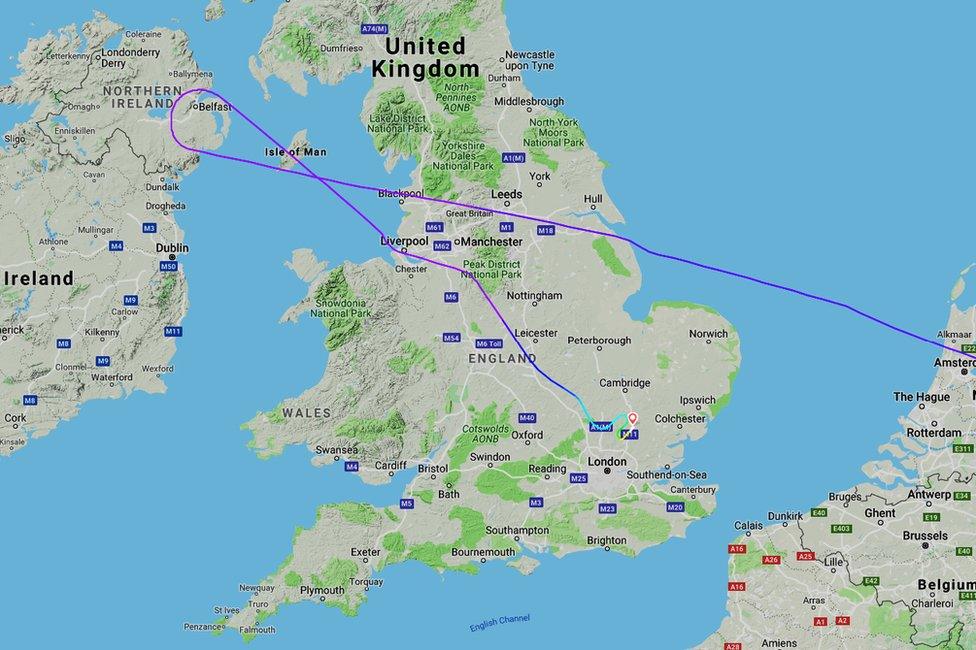
The passenger aircraft was flying from Mumbai to Newark in the US before it turned round and landed at London Stansted Airport
A sonic boom was heard across Derbyshire as military aircraft were launched to intercept a passenger plane following a reported bomb threat.
Police and the fire service received "a large number" of 999 calls from people who feared there had been an explosion or earthquake.
Some people reported their homes being shaken by the sonic boom, which was heard shortly before 10:00 BST.
The RAF confirmed Typhoon aircraft had been launched.

The Typhoon jet (top of picture) flew at supersonic speed to reach the passenger plane
"The RAF can confirm Quick Reaction Alert Typhoon aircraft were launched this morning from RAF Coningsby to intercept a civilian aircraft," a statement said.
"The aircraft was safely escorted to Stansted Airport. The Typhoon aircraft were authorised to transit at supersonic speed for operational reasons; any inconvenience caused to local residents is regretted."
A woman filming her dog caught the sonic boom on camera
Claire Murray, who lives in Breaston, was filming her dog Tala about to go in a paddling pool when she heard the sonic boom.
"It scared everyone because it's such a quiet area," she said.
"We thought there was a major explosion somewhere.
"It made the whole house shake. The dogs ran into the house scared and the birds were flying everywhere."

What causes a sonic boom?
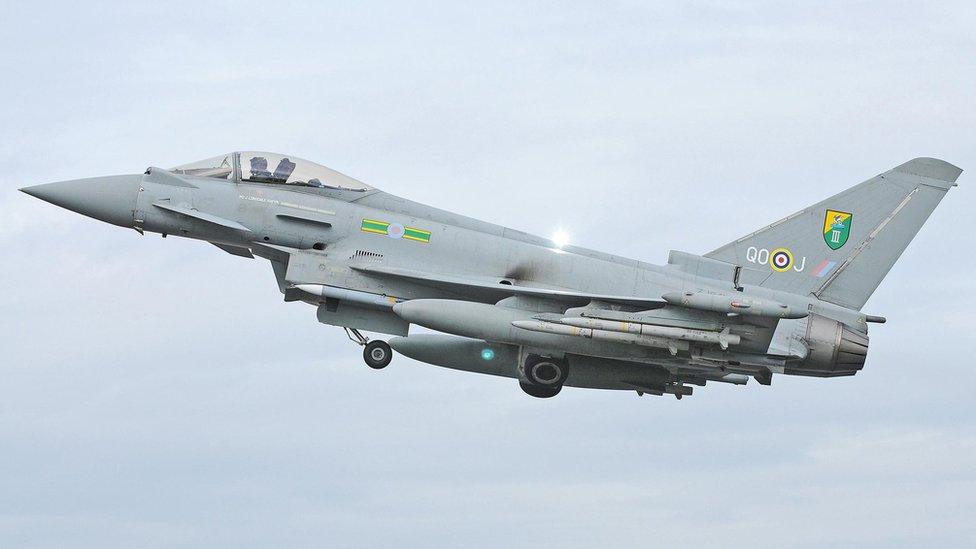
Typhoons can travel at twice the speed of sound
When an aircraft approaches the speed of sound (768mph or 1,236km/h), the air in front of the nose of the plane builds up a pressure front because it has "nowhere to escape", said Dr Jim Wild of Lancaster University.
A sonic boom happens when that air "escapes", creating a ripple effect which can be heard on the ground as a loud thunderclap.
It can be heard over such a large area because it moves with the plane, rather like the wake on the bow of a ship spreading out behind the vessel.

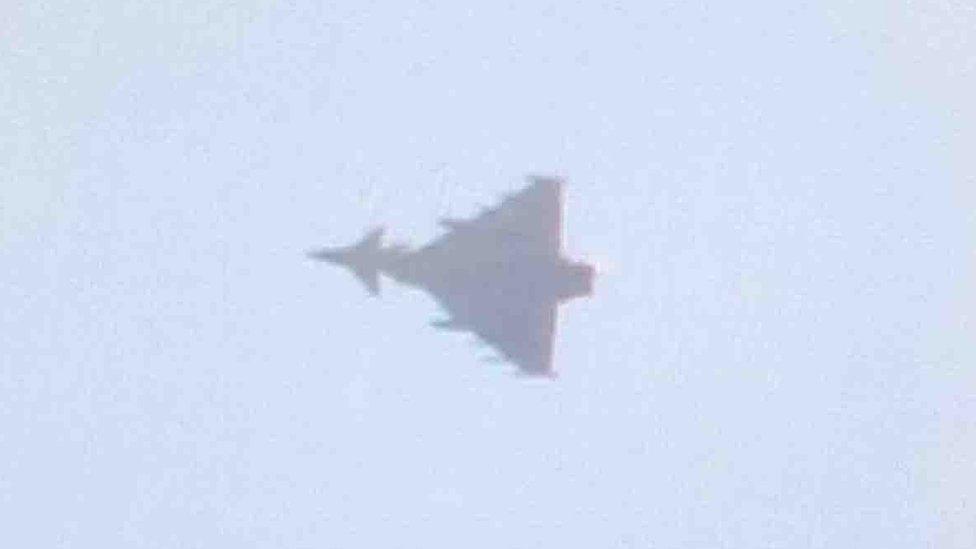
One of the Typhoons was photographed after escorting the passenger plane to Stansted Airport
Bob Billington, who lives in Derby, said he heard two bangs in quick succession and guessed it was a sonic boom.
"The first bang was rather loud, like the thunder from a very close lightning strike, then rather less than a second later there was a second, not quite as loud, and then the echoes from the surrounding buildings making it sound like a fairly short roll of thunder," he said.
"I assume there aren't very many of the people reporting it have actually heard one before, so I can understand their reactions."
The BBC was given exclusive access to one of the RAF's Quick Reaction Alert stations
Stuart Dean, who works at a car dealership near Pride Park, said it "felt like the whole world shook".
"It felt like the whole thing came from behind us so we all rushed out to see what it was," he said.
"We're in a really big unit and the whole thing shook."
Allow X content?
This article contains content provided by X. We ask for your permission before anything is loaded, as they may be using cookies and other technologies. You may want to read X’s cookie policy, external and privacy policy, external before accepting. To view this content choose ‘accept and continue’.
Allow X content?
This article contains content provided by X. We ask for your permission before anything is loaded, as they may be using cookies and other technologies. You may want to read X’s cookie policy, external and privacy policy, external before accepting. To view this content choose ‘accept and continue’.
Allow X content?
This article contains content provided by X. We ask for your permission before anything is loaded, as they may be using cookies and other technologies. You may want to read X’s cookie policy, external and privacy policy, external before accepting. To view this content choose ‘accept and continue’.
The RAF said it could not say how many Typhoons were launched "for operational reasons".
They were escorting an Air India passenger plane that made a "precautionary landing" after the airline initially reported a bomb threat.
A statement from Stansted Airport said the plane landed at about 10:15 BST and was in an isolated part of the airport.

Follow BBC East Midlands on Facebook, external, Twitter, external, or Instagram, external. Send your story ideas to eastmidsnews@bbc.co.uk, external.
- Published27 June 2019
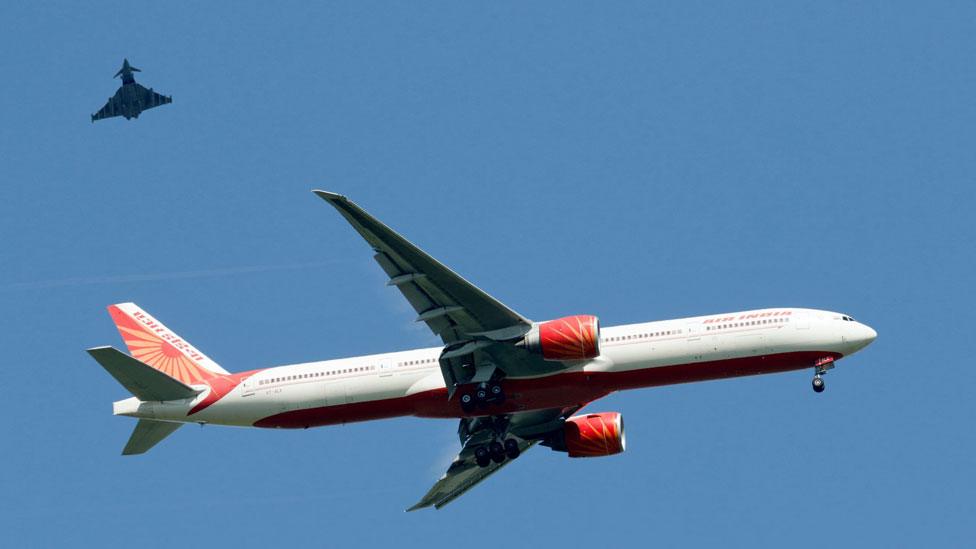
- Published25 June 2019
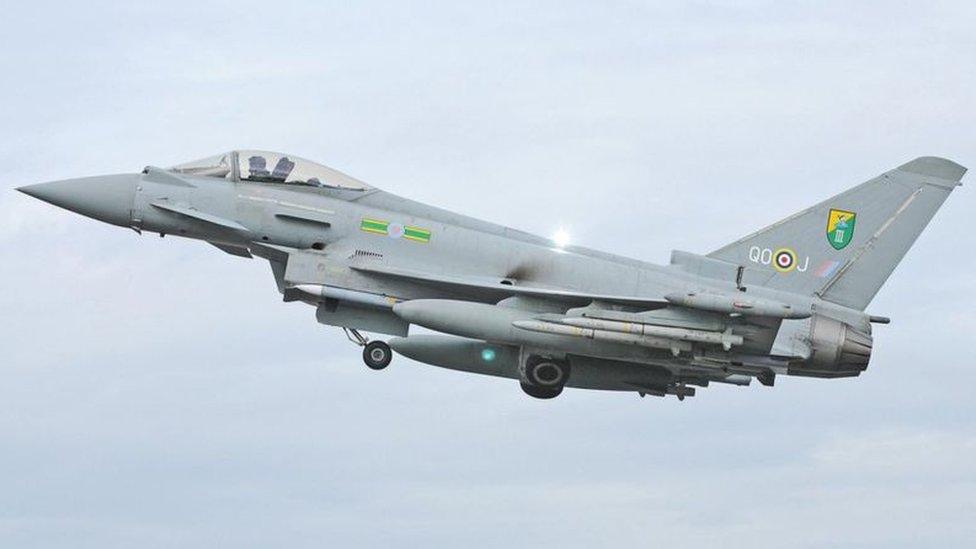
- Published24 June 2019
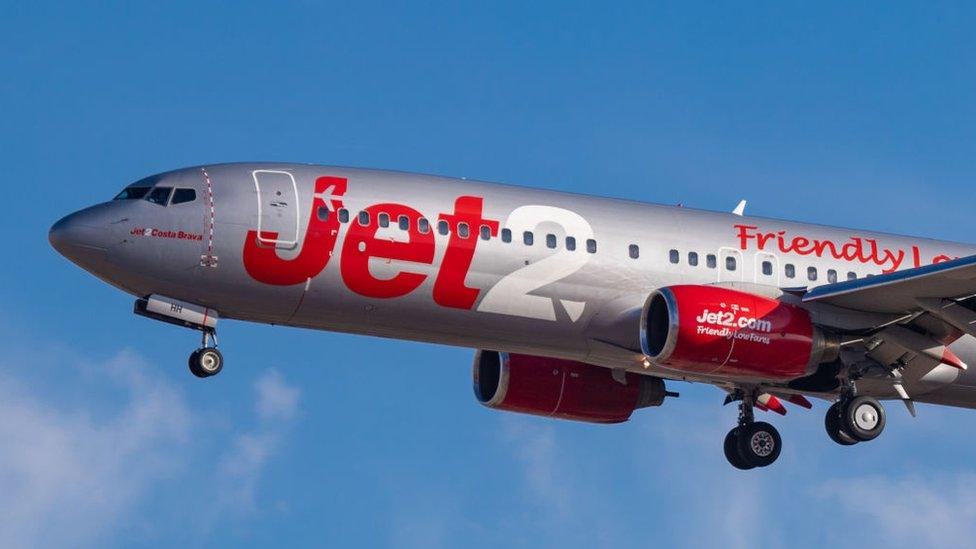
- Published1 August 2014

- Published13 April 2012